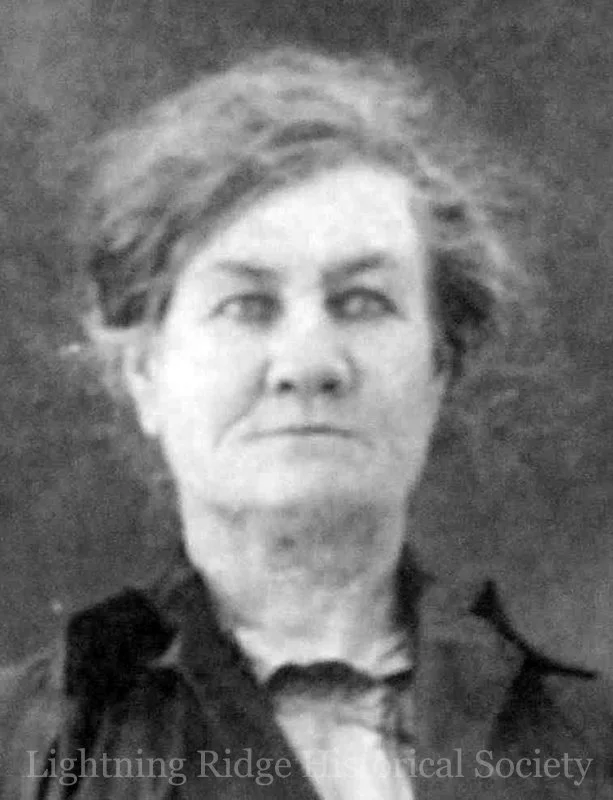Elizabeth “Mrs. Wilby Wilby” Nolan Brown
Elizabeth Nolan Brown (1858–1920), known as Mrs Wilby Wilby, was a formidable figure in the early history of the Grawin. Born Elizabeth Nolan to Janet and Edward Barton near Mendooran in 1858, she married Joseph Nowlan at Walgett in 1875. They had four children before Joseph’s early death. In 1882, Elizabeth married John Brown, with whom she had another four daughters while operating the Grawin Inn.
Described as “one of the hardest cases of a woman you could strike,” Mrs Wilby Wilby was a local legend for her wild temper, generosity, and fearlessness. She was a respected horsewoman, known for yarding wild horses. She was also known for taking in drifters and swagmen, unless they crossed her. Her Grawin hotel was a haven for passing travellers and hawkers, and also a notorious site for selling sly grog (unlicensed liquor) and having numerous run-ins with the law. She was fined multiple times from the 1890s through the early 1900s for illicit liquor sales, including a £100 fine in 1903 after testimony from informant Jimmy “the Whisperer.”
Elizabeth once shot a man in the ankle for pestering her for rum and was known to fire warning shots to break up rowdy patrons. Her pub reportedly had bullet marks on the verandahas a result of disputes with police, drunks, and at least one fleeing suitor. On another occasion, she emerged naked from her outdoor bath to chase a heckling shearer through the lignum scrub on horseback with a stock whip.
Mrs. Wilby Wilby’s death in 1920 was dramatic. She was found murdered by strangulation in her bedroom at the old Grawin Hotel. The prime suspect, station worker Jack Bland, was arrested and tried but ultimately acquitted. Forensic details included human bite marks and a crushed larynx. According to Smith’s Weekly and oral histories, hers was the fourth suspicious death at the Grawin Hotel, including two policemen and a lottery winner, all of which sat unsolved.
Elizabeth “Mrs. Wilby Wilby” Nolan Brown was buried at her Grawin property. Her story lives on as one of the most vivid characters of the Lightning Ridge and Grawin area.
Article: Research by Leisa Carney, edited by Russell Gawthorpe. LRHS research compiled by Len Cram and Barbara Moritz. Sources: The Lightning Ridge Book, Stuart Lloyd, 1967, pp. 81, 177-179; ‘Old Grawin Grog’, Smith’s Weekly, 29 September 1934, p. 16.


